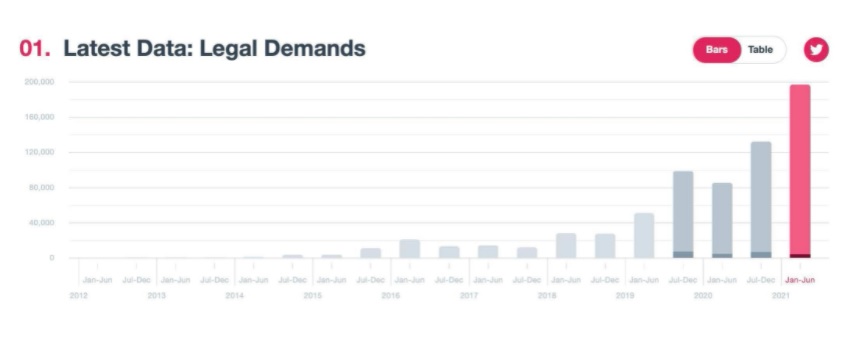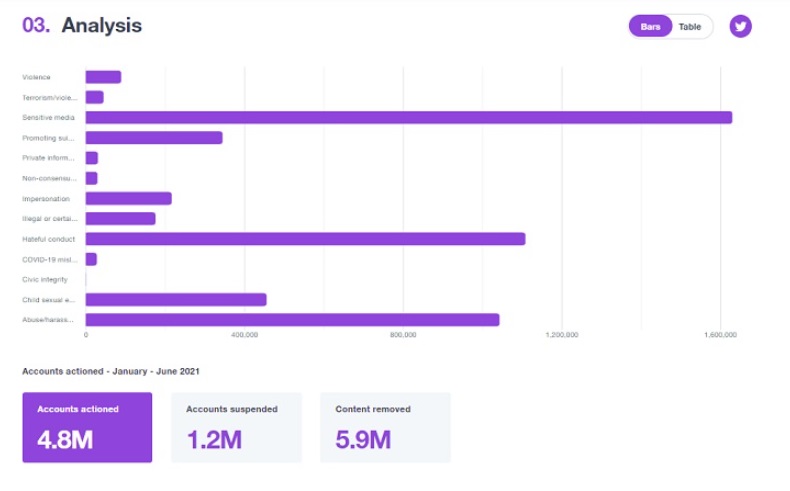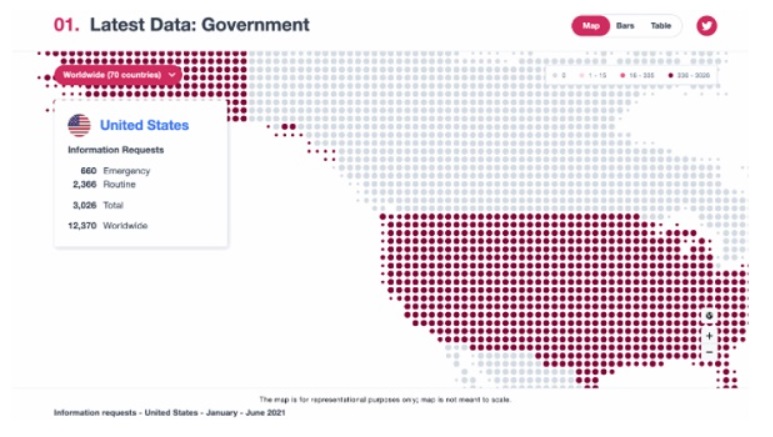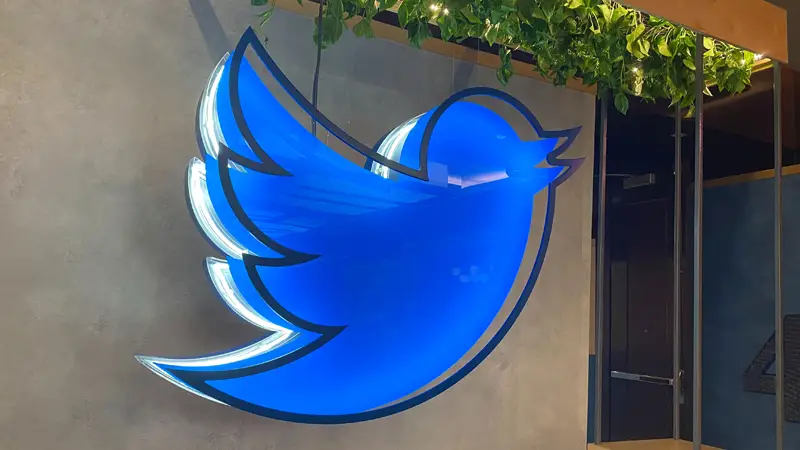Twitter has published a new transparency report, which details all of the accounts and infractions it handled throughout the first half of 2021.
In the report, Twitter also discussed key trends and changes in platform usage, as well as misuse, to enhance the user experience in keeping with its free speech principles.
Twitter received 43,387 content removal requests in the first half of 2021
The platform received 43,387 legal demands from governments requesting the content be deleted in the first six months of the year, affecting some 196,878 accounts.

“Of the total global volume of legal demands, 95% originated from only five countries (in decreasing order): Japan, Russia, Turkey, India, and South Korea. We withheld or required account holders to remove some or all of the reported content in response to 54% of these global legal demands.”
Last year, Twitter was on the verge of being banned in Russia after the government asked the platform to remove some content. The government’s request was eventually complied with after the service was slowed down by Russian authorities, but the situation is still tenuous, as Twitter fights its ideals of promoting free speech versus more restrictive norms in some countries.
The app has also run into regulatory problems in India, where authorities have tried to block certain aspects of it. This has resulted in conflicts in the region. Japanese officials have also sought removals related to political conflicts.
It’s a tough problem for Twitter, which poses a significant hazard to the app’s popularity, especially if the platform does get hit with regional bans. With each dispute, Twitter’s stock price drops, and because the app is becoming a more prominent platform for information sharing and public debate, this will continue to be an issue in many ways.
Twitter also notes that it has deleted a whooping 4.7 million tweets that violate its guidelines in the time period, according to the report.
“Of the Tweets removed, 68% received fewer than 100 impressions prior to removal, with an additional 24% receiving between 100 and 1,000 impressions. In total, impressions on these violative Tweets accounted for less than 0.1% of all impressions for all Tweets during that time period.”
 As can be seen in the graph, Twitter deleted most material for breaching its “Sensitive Media” rules, which it claims was increased due to “initiatives launched to bolster operational capacity.”
As can be seen in the graph, Twitter deleted most material for breaching its “Sensitive Media” rules, which it claims was increased due to “initiatives launched to bolster operational capacity.”
Twitter notes that it permanently banned 453,754 unique accounts for violating its child sexual exploitation policy, with 89 percent of them being discovered through industry hash-sharing. For the purpose of promoting terrorism and violent organizations, Twitter has removed more than 44,974 unique accounts.
“These requests accounted for 27% of all accounts specified from around the world, and Twitter complied, in whole or in part, with 68% of these US information requests.”

With former President Donald Trump being prohibited from the platform, and several officials being investigated for their conduct during the Capitol Riots, it’s only natural that more information was requested from the United States government.
It’s an intriguing glimpse into Twitter’s enforcement actions, as well as important trends that could have a big influence on the platform in the future. The most interesting thing here is the continual disputes between governments and social media platforms over potential censorship and content removal at their request, what would happen if Twitter refuses to take action?
We've always believed the internet should be global, free, and secure.
Today, we aim to inform the policy debate that is taking place concerning its future.
These are the five guiding principles we believe will underpin successful policy: https://t.co/aRugdIn6Qo
— Global Government Affairs (@GlobalAffairs) October 12, 2021
Twitter, again, wants to keep its free speech values in line with reality, but as the app becomes a larger target for influence operations and is recognized by more lawmakers as a way to influence voters, it will continue to face pressure on this front, putting Twitter management in an impossible position of maintaining its principles while also managing investor expectations.
It appears that this will become a bigger problem at some time, as government removal demands continue to mount.





